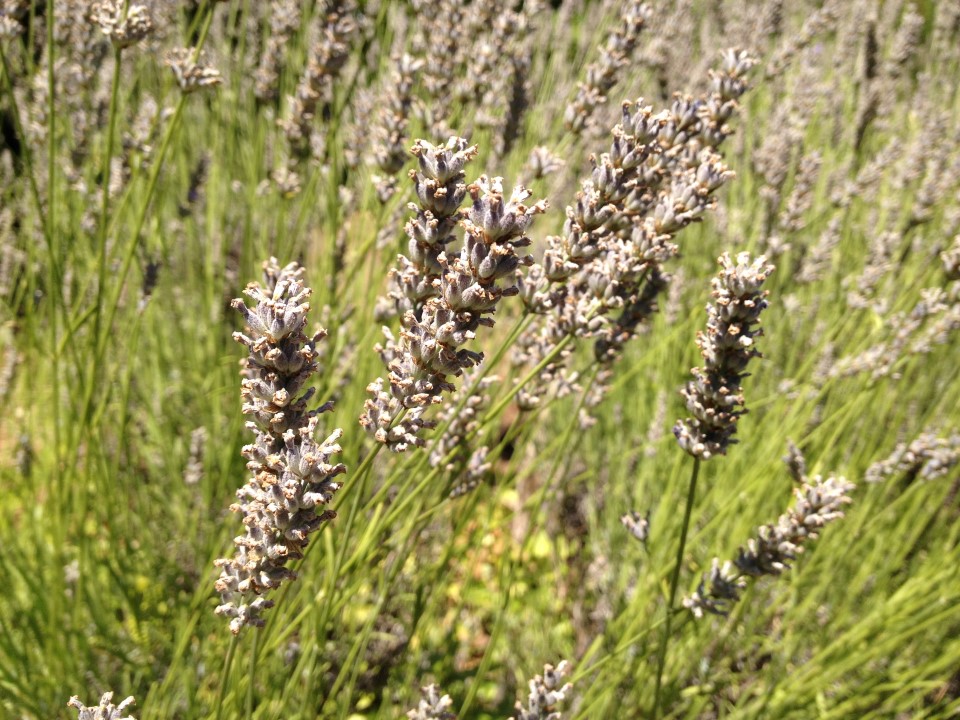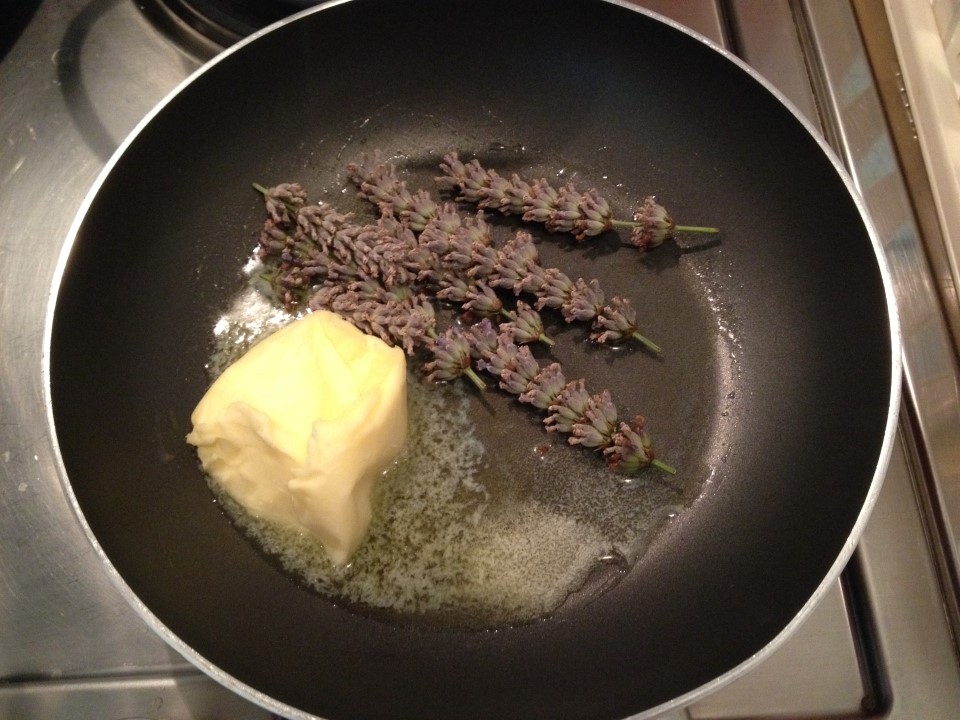While staying at Island of Hvar in middle Dalmatia I got inspired by big fields of lavender to give a try to a lavender bread. Right now there is a crop of lavender going on and when you pass such field the smell of lavender is simply amazing. Island of Hvar is known to be the island with most sunny days in whole Dalmatia what provides a very good natural conditions for growing lavender, wine and olive trees. As the landscape is very rough with a lot of rocks and small patches of soil the lavender fields are surrounded by stone walls made from rocks which were manually removed centuries ago in order to prepare small micro fields where people could plan olive trees and lavender. The lavender crop is performed completely manually old fashioned way with sickle. I took some shots of this process while passing people harvesting lavender by bike.

Typical lavender field at Island of Hvar with love trees in the background.

Lavender from backyard where we stay on holidays.

I started lavender yeast water with one tablespoon of honey, some lavender flowers and water. I will use it to make another batch of lavender bread later on this week.
As this was the first time I was making lavender bread I searched through TFL posts and found this interesting post and comment by hanseata (here) with the idea that one should used melted butter to infuse lavender taste into the food. For my bread which was made out of 600g of bread flour I used lavender flowers from 8 stems.

Using butter to capture the lavender flovour.
I prepared the mixture of 70g of butter and lavender flowers (from 8 stems) at the time when I prepared my levain, so about 6 hours before mixing the dough.
The rest of the process was similar to my standard procedure. I used 600g of strong bread flour (type 850), initially 70% of water with additional 5% added after first 30 minutes. The butter was warmed up and strained before initial mixing which included all flour, water, 100g of starter and all butter. Bulk fermentation was bout 3 hours and then immediate cold retard for about 11 hours. Baked in iron-cast skillet.
The result: I was extremely pleased with result. Whoever tasted the bread agreed that the flavor of lavender was maybe a little bit too strong when you tasted the bread without anything on top of it like butter with jam. So for next time I will use lavender flowers only from 5-6 stems.
This bread perfectly pairs with butter, creme fraiche and any kind of jam, but also fits perfectly together with the Parma ham.



Happy baking, Joze